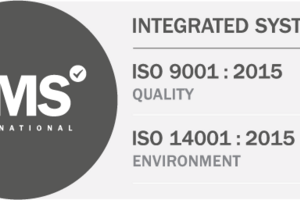28 April 2015
A new approach to retrofit resistance
New-generation LED lighting fixtures can deliver massive cost-savings for all kinds of businesses – but that doesn’t mean there isn’t still plenty of resistance to retrofit installations. Bob Hall, our Managing Director explains why the threat of downtime from failing heritage systems means that businesses overlook LED-transition at their peril…
Over the last five years, LED lighting technology has become increasingly ubiquitous in both residential and commercial environments. Its steady rise to prominence during this time might lead one to surmise that LED’s ability to deliver substantial energy and operational savings is now universally acknowledged – but as the old song goes, ‘it ain’t necessarily so’.
 Not only is there a surprising level of resistance to new-generation lighting in a variety of industrial sectors, there also appears to be a failure in some quarters to grasp the fact that holding on to heritage lighting systems – with all their attendant reliability and life-expectancy issues – puts businesses at grave risk of financially-challenging downtime.
Not only is there a surprising level of resistance to new-generation lighting in a variety of industrial sectors, there also appears to be a failure in some quarters to grasp the fact that holding on to heritage lighting systems – with all their attendant reliability and life-expectancy issues – puts businesses at grave risk of financially-challenging downtime.
To ascertain the full nature of the current situation, the team here at Greenlite recently embarked upon an exercise to gauge the interest of several hundred companies in the possibility of replacing old, primarily flourescent lighting fixtures with new, efficient LED ones. The emphasis here was on retrofit installations that were quick, easy and undemanding in terms of labour and expense. Some of the calculations that we were able to present to maintenance managers and other personnel were nothing if not compelling; for example, we worked out that one firm could halve its £520,000 annual energy bill by replacing fluorescent fixtures with LED equivalents.
But although some of those we spoke to could immediately see the value of this transition, a significant number proved to be more resistant. Too much time or trouble, some suggested, while there was also concern about the practical impact of the installation phase on offices and factory floors. But as the conversations progressed, I became increasingly convinced of one thing – that in many cases, the practical long-term disadvantages of not converting to LED lighting technology are likely to be far greater than the short-term inconvenience of making the transition.
Question numero uno for the more resistant respondents would surely have to be: ‘Can you really afford the downtime that will result from a lighting system failure?’ For example, in the event that an ageing lighting installation located above a vital piece of factory equipment is the subject of a failure, hours or potentially days of valuable working time could be lost whilst a replacement is arranged. By contrast, to make an investment in the latest LED lighting technology is to commit to vastly extended lifecycles and reduced maintenance requirements that will mean downtime effectively becomes a thing of the past.
Making a case for retrofit around the simple explanation of energy bill reduction, it has gradually become clear, is not necessarily an effective approach. Indeed, a surprising number of companies were unable to even provide an estimate of their energy bills upon request – where presumably they would have no difficulty quoting their turnover or total labour costs. But pointing out the potential for huge disruption of lighting system failure and subsequent downtime – with all the challenges that for staffing with regard to both permanent and short-term contract personnel – undoubtedly opens more doors to new business.
In the longer-run, regulatory impulses such as the UK’s legally binding requirement to reduce its carbon emissions by 80% by 2050 will surely be a spur to action by businesses across the board. But in the shorter-term, I am convinced that – with the proper explanation and support – the retrofitting of outdated lighting equipment can play a significant part in disrupting the ‘circle of inertia’ on energy efficiency.
For companies like Greenlite, whose entire business is founded on conveying the wisdom of energy-efficient lighting solutions, one aspect of the challenge resides in tackling the possible indifference of some in-house electrical and engineering personnel, who may feel threatened by the intervention of an outside company. Integral to making our case, therefore, is an explanation that not only are we not there to undermine their own positions, we have actually been enlisted to make their working lives easier and to carry out our work with the least disruption possible.
Despite the resistance still encountered in some quarters, Greenlite itself is firmly locked on a trajectory of growth. From a small-scale start in 2010, the company and its import wholesale distribution operation now employ a total of 22 engineers and 14 office staff, and have a regular pool of between 20 and 60 subcontractors. Turnover is expected to reach £20 million during or before 2020, by which time we expect virtually all of our lighting installations to involve LED technology.
The trend towards energy-efficient lighting, therefore, is strong and undeniable. Over the next few years, the primary challenge for Greenlite and other companies who believe in the benefits of next-generation lighting technology will be to convince businesses that they can be benefiting from LED today – there is no need to wait until tomorrow.
Want to find out how you can build the business case for retrofit? Let us help. Drop us a line at info@greenliteuk.com


